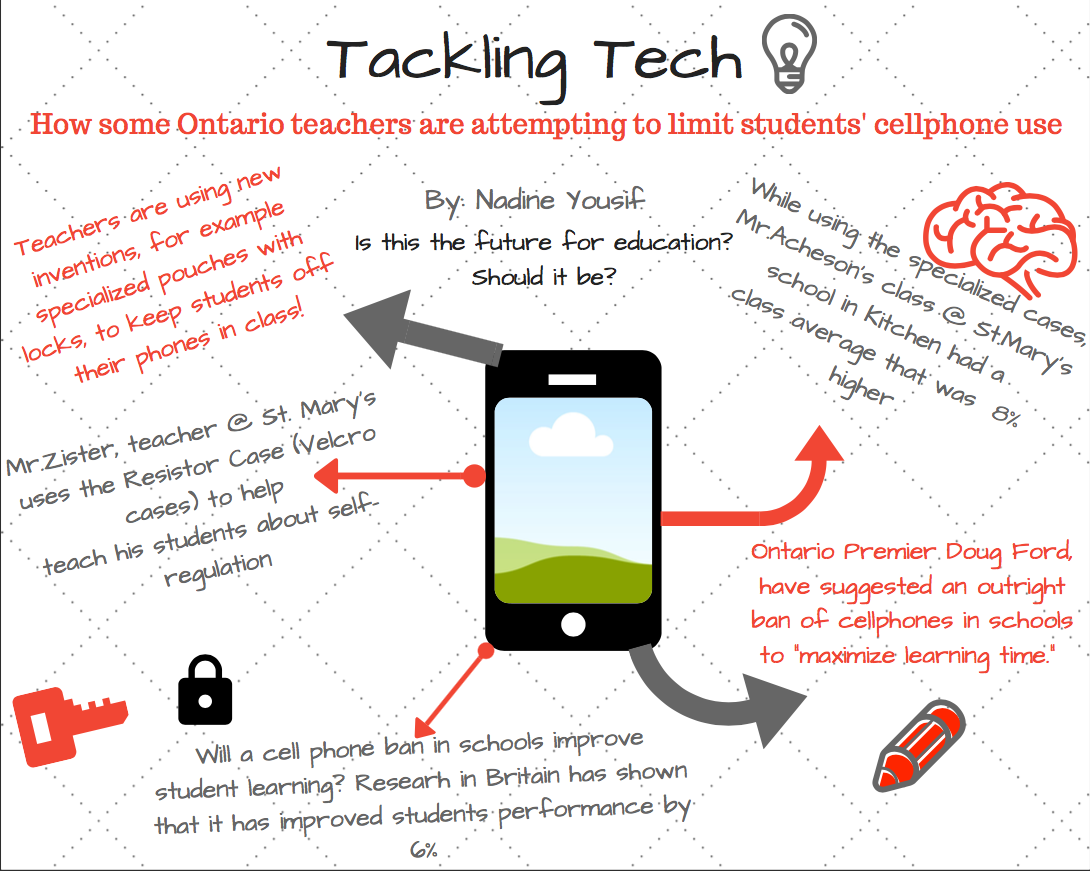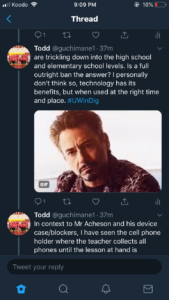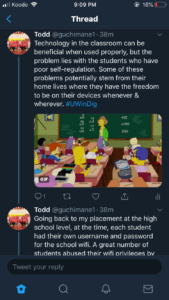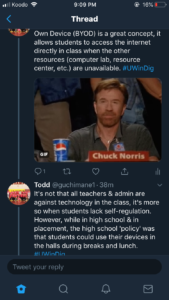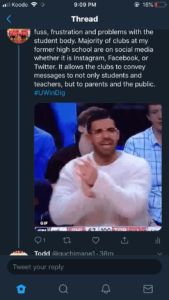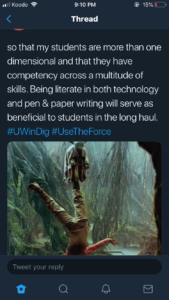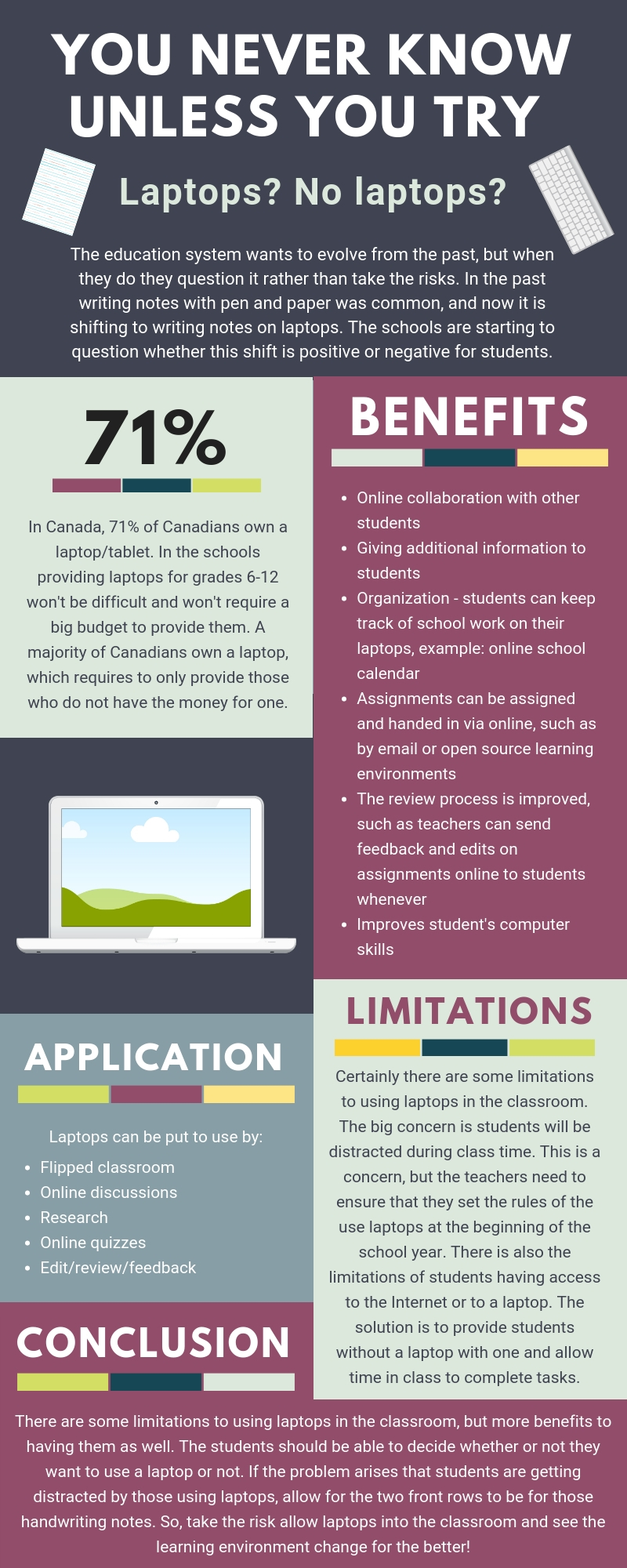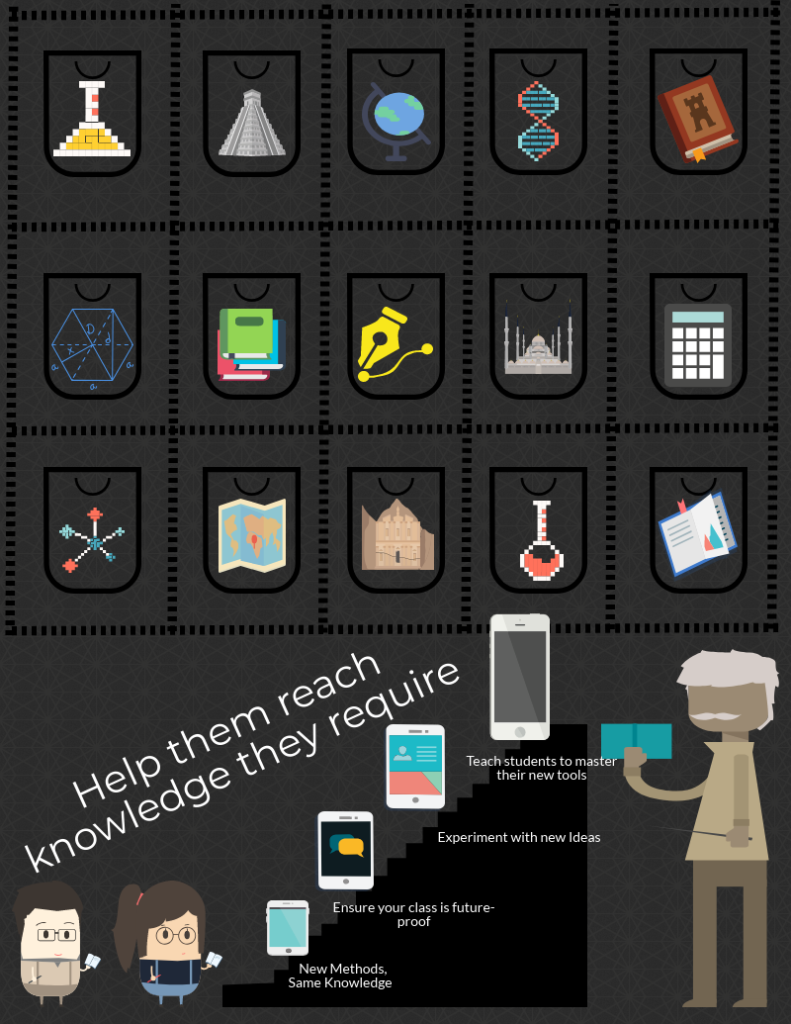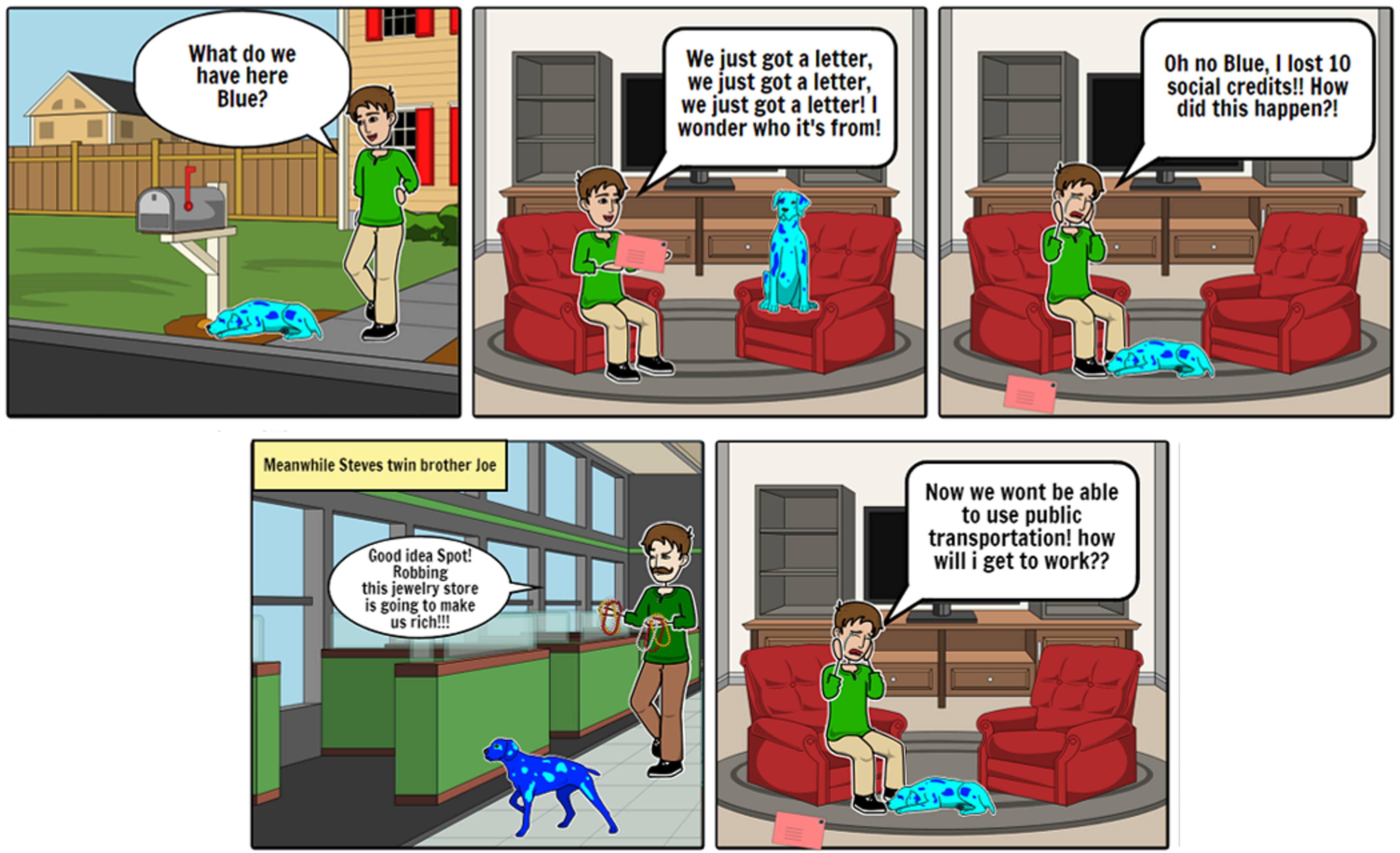The article that I chose to focus on this week was: Tackling Tech: How some Ontario teachers are attempting to limit students’ cellphone use by Nadine Yousif.
This time around, I decided not to go with a Template or Drag-n-Drop platform and decided to physically draw out my article summary/reflection by hand. I have never made a sketchnote before (and I’m not the greatest artist around), but I found this method to be kind of freeing as I was able to do literally whatever I wanted to do. At the same time, I feel like there were some restrictions, but more-or-less due to my inability to art well.
I have never done a sketchnote before, so now I can say that I have! ![]()
Below you will find the sketchnote of my summarization:
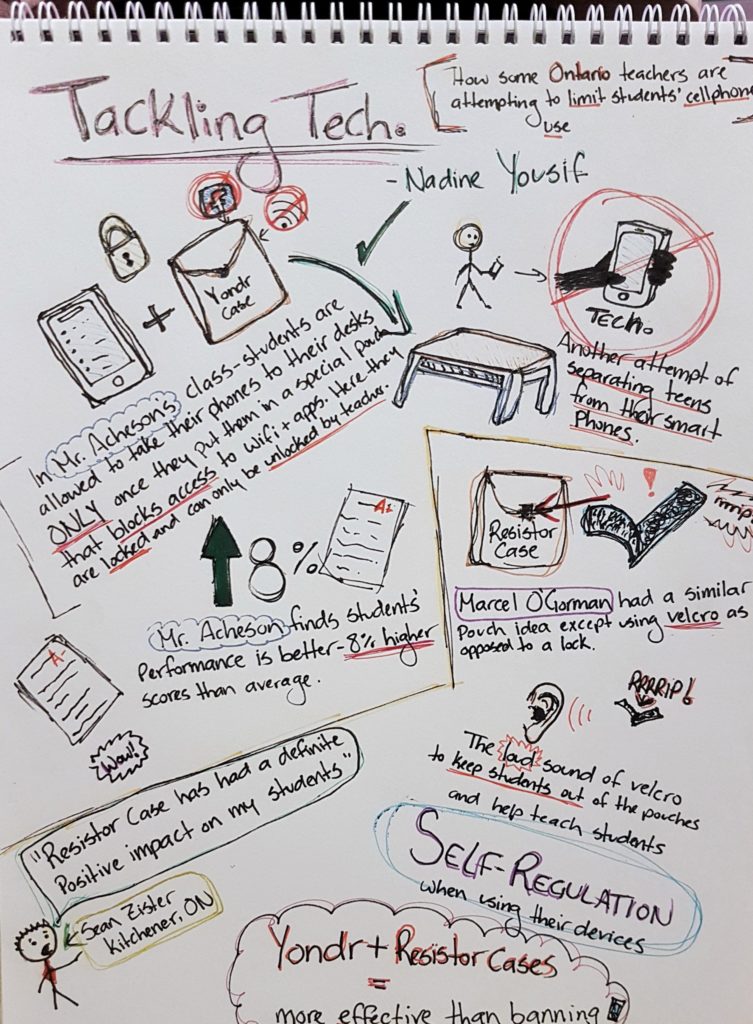
(Forgive my awful drawings! It’s the thought the counts!)
This article discusses the topic of allowing students to have their cellphones with them at their desks, but only with the utilization of the Yondr Case (a case that locks students’ phones away until the teacher unlocks it), or the more lenient, DIY Resistor Case (a similar idea but with Velcro instead of a lock to deter students from opening due to the loud sound).
These cases were created as a sure way to make sure that students would not be distracted by their cellular devices during class. According to the article, there are benefits of using either of that case with claims made from multiple Ontarian teachers who state that they have noticed a difference in the performance of their students. These teachers find that with the removed distraction of smartphones and devices, students seem to be more focused and are getting better scores than they had before.
The article also makes claims that these phone cases are seemingly more effective than having an outright ban of devices in the classroom (a ban that even Ontario Premier Doug Ford has proposed).
Personally, I have never heard of these cases before, and I can definitely see and understand how they can work and be of use in the classroom, but I also feel like you shouldn’t rule out technology in the classroom altogether.
I have both witnessed and experienced the distracting nature of cellphones in the classroom; however, I have also both witnessed and experienced the benefits of utilizing them in the classroom as well.
 I have been the student in the room that has tried to escape from a boring lecture by scrolling through social media, and I have also been the student that pays extra attention when Kahoot! comes into play, or if we are exploring something digitally as a class that keeps me engaged on the topic at hand.
I have been the student in the room that has tried to escape from a boring lecture by scrolling through social media, and I have also been the student that pays extra attention when Kahoot! comes into play, or if we are exploring something digitally as a class that keeps me engaged on the topic at hand.
The same thing goes for the students that I have had the opportunity to teach thus far. I can see when they are disengaging and often times this turns into reaching into their pockets for their devices to stimulate their interests and escape from something they find to be boring. At the same time, these same students absolutely love and completely engage when Quizziz, Kahoot!, Gizmo, or the iPads in general come out.
In regards to these cases, it seems as though with the Yondr case, teachers are essentially locking away students’ phones until the students leave the classrooms. This leaves little to no opportunity to utilize technology in the class altogether.
So, with that being said, if I really had to choose between the two cases, I would definitely go with the more lenient DIY version that is the 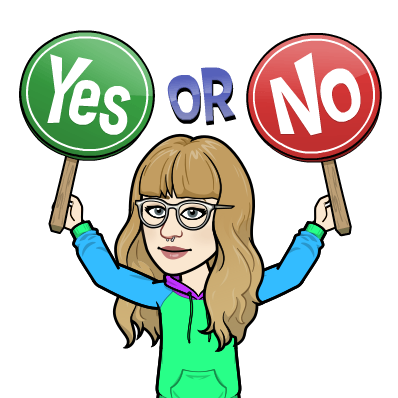 Resistor Case. Although students are still “locking away their devices”, they are doing so with Velcro. This is supposed to deter them from wanting to open their phones during class (because of the loud sounds the Velcro makes) which is apparently supposed to help teach students self-regulation when using their devices.
Resistor Case. Although students are still “locking away their devices”, they are doing so with Velcro. This is supposed to deter them from wanting to open their phones during class (because of the loud sounds the Velcro makes) which is apparently supposed to help teach students self-regulation when using their devices.
Another reason that I like the Velcro option more is that even though students are still putting their phones away, they are not physically locked out of the cases which allows opportunities for students to utilize their cellphones in class when it is appropriate to do so (i.e when the teacher has permitted it in class and a lesson requires its use).
As a teacher and a student, I understand the frustration that technology can have in the classroom, and I can understand why teachers may want to ban it all together; however, at the end of the day, I truly believe that technology can be a powerful tool in the classroom if utilized properly. Honestly, it seems absolutely ludicrous to me that there are conversations of banning cellphones in the classroom. Technology is always advancing and as educators we need to keep up with it and find ways to utilize them in the education of our students. Yes, students may be tempted to stray from their tasks with their devices, but it is a good idea to help them learn how to self-regulate and be responsible with their devices so that they may do great things.
But, that’s just my opinion. I would love to hear yours!


